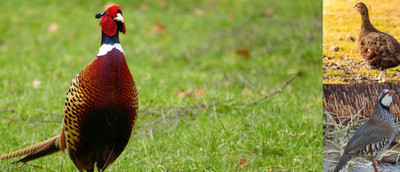Filter by Topic:
Posted by B.Bithell on May 02, 2024
Game Shooting in the UK - Pheasant, Partridge or Grouse
What really is game shooting in the UK?
Well, what do you prefer? Perhaps pheasant, partridge or grouse shooting?
Basically, these are the three types of wild game that are available to shoot within the UK. According to the Game Act 1831, 'game' includes, hares, pheasants, partridges, grouse, moor game (such as red grouse, ptarmigan) and black grouse.
So, in today's shooting circles, game shooting mainly refers to the pursuit of pheasant, partridge and grouse.
In this guide we look at the characteristics and habits of pheasants, partridge and grouse and how they differ.
Game Shooting in the UK
In the United Kingdom, the most popular game shooting activity involves pheasant shooting. It's worth noting that the UK shooting season starts in October and runs until the end of February, (January for Northern Ireland and the Isle of Man) Recent studies conducted by the UK Parliament shows that this sport contributes up to £2 billion pounds to the economy.
In 2015, The Royal Society for the Protection of Birds (RSPB) stated that pheasant and partridge shooting provides benefits to the wildlife. The organisation claims that good shooting practice, as set out by BASC, does "provide beneficial habitat management for wildlife". It is suggested that this,in turn, can increase the population of some game birds.
Pheasant Breeds
Pheasants are part of the Phasionidae family which are described as heavy, ground living birds. Phasionidae birds include partridge, jungle fowl, chickens, old world quail and peafowl.
The common pheasant is a large chicken like bird that lives on the ground. These birds forage on the ground in fields eating waste grain, seeds and insects. Pheasants tend to run and walk around but will fly when they feel they are in danger from other predators or humans.
There are over 29 different breeds of pheasants in the world. The map below identifies the different types of pheasants and where they can be found in the world:
29 Breeds of pheasants and where they can be found in the world
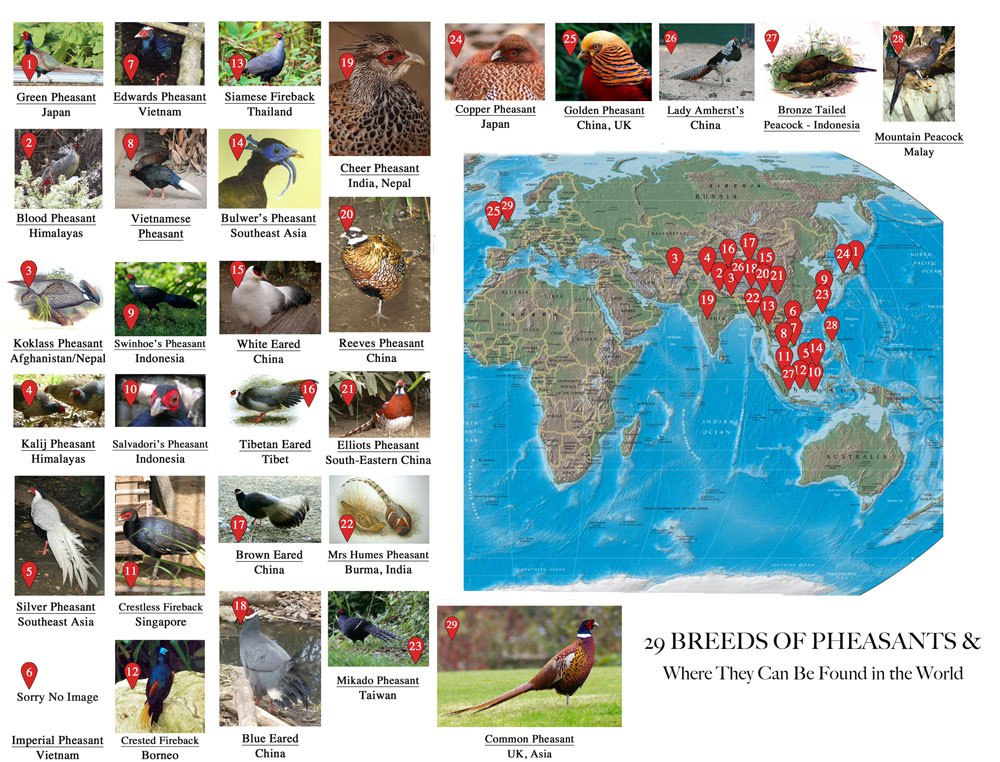
Both cock and hen pheasants are shot during the season. Both males and females have fairly long legs, a small head, a long neck and a fairly plump body. So, how can we differentiate between the two? The table below should help:
COCK PHEASANTS (MALES) CHARACTERISTICS:
- bright colours
- wattle
- bold white ring-necked
- showy birds with a red face and iridescent green neck
- usually larger than females
- longer tail than females
- tail is a coppery colour with thin black bards
- don't rear young pheasants
- make a loud cackling sound
- average weight 2 to 3 pounds

HEN PHEASANTS (FEMALES) CHARACTERISTICS:
- short tail
- smaller than male
- tail is brown with paler scaling
- cinnamon colouring with brown scaling on the belly
- lays between 8 and 12 eggs per clutch
- average weight is 2 pounds
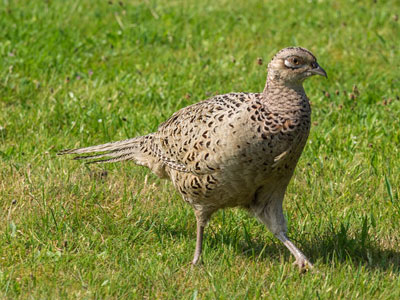
The common pheasant are usually found on agricultural land especially on recently harvested fields, looking for seeds and worms. They tend to hide from predators in taller vegetation, hedgerows and bushy areas.
Pheasants are fairly predictable birds and therefore shooting them is easier than other game birds. Having the right shooting technique and skill is essential when dealing with high flying pheasants.
As you become more skilled you will, of course, become more successful. When this happens it may be useful to explore some perfect pheasant recipes to give you some inspiration!
Partridge breeds
Partridge is another favourite game bird to shoot in the UK. This medium-sized non-migratory game bird is popular throughout Europe, Asia and also some parts of Africa. These birds are often reared on game farms and then released for the purpose of hunting.
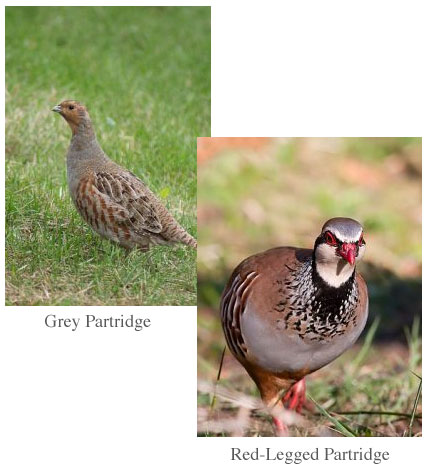
There are over 50 different breeds of partridge in the world, including the mountain bamboo partridge found in Bangladesh and the Hainan partridge found on the Hainan Island of China. However, in the UK, the most popular species of partridge for shooting are grey partridges and red-legged partridges.
Grey Partridge
The grey partridge, a beautifully coloured bird, has declined in numbers over recent years and, as a result, in 2015 this bird was placed on the "Birds of Conservation Concern" Red list. They are now considered at risk.
To help to increase numbers, the Game & Wildlife Conservation Trust have created a plan to reduce the amount and spread of pesticides on agricultural land. This will help certain types of weeds and insects to thrive creating food for young and adult grey partridge. The grey partridge is usually found on the edge of cereal fields where they can have constant access to seeds.
Grey partridge characteristics:
- a medium sized game bird
- fairly plump birds
- distinctive orange face
- a chestnut tail
- mainly a ground-bird but occasionally glides
- hens lay approx 20 eggs
- it builds ground nests
- young birds live on insects until 10 days old
- adult birds live on seeds and leaves
- not as popular in Northern Ireland
- seen all year round
Red-legged partridge
The red-legged partridge is slightly larger than the grey partridge. Its distinctive colouring of a large white chin and throat patch, with a black border, makes these birds easy to spot. The red-legged partridge is most commonly seen in Spain and France but has recently been introduced to the UK from Europe.
Red-legged partridges prefer to run away from predators rather than fly, but if necessary they will fly short distances.
This game bird is bred for shooting and for the sale of meat.
Reg-legged partridge characteristics:
- usually seen in groups
- eats seed and roots
- the young eat insects
- seen all year round
- a fairly round game bird
- grey breast and buff belly
- red legs
- lays eggs in ground nests
- thrives on dry, sandy soil
- breeds in hot temperatures
A good technique is needed if you are to be successful at shooting partridge. They can be deceiving and are less predictable than pheasants.
Grouse Breeds
A grouse is similar to a partridge in its appearance. This is due to its rounded body it's short yet broad wings and its
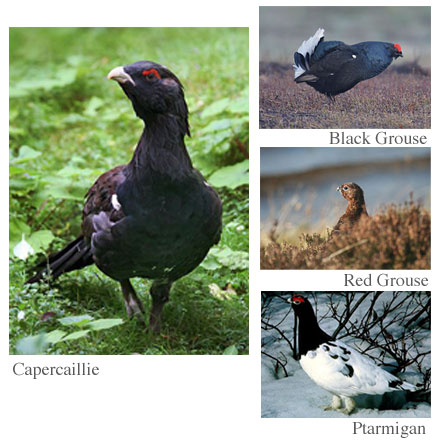
small head.
These medium to large sized game birds are generally found in heather, rushy areas, rough grass and woodland edges. There are several different breeds of grouse which include Black Grouse, Capercaillie, Ptarmigan and Red Grouse.
Under the "Birds of Conservation Concern" listings, the grouse is currently at an amber status,due to a decline in numbers. It is suggested that this is linked to disease and loss of heather moorland.
Grouse characteristics:
- found in upland heather moors
- seen all year round
- eat heather, seeds, berries and insects
- weighs between 0.3 to 6.5kg
- males are larger than females
- feathered legs
Ptarmigan characteristics:
- slightly larger than grey partridges
- found on the highest mountains of highlands of Scotland
- seen all year round
- eats shoots, leaves, leaf buds, berries and insects
Red grouse characteristics:
- medium sized game birds
- plump bodies with a short tail
- measure between 33 and 38cms height
- legs and feet are covered in feathers
- reddish-brown in colour
- males have a red eyebrow wattle
- they are feisty birds that compete for an area of moorland
- females nest in bilberry bushes and heather for protection and camouflage
Capercaillie characteristics:
- the largest of the grouse family
- usually found in Scotland
- numbers are depleting
- male weighs up to 4kgs and has chocolate coloured back and wings, a metallic green breast, white markings on the wings and crimson markings above the eyes
- females are smaller than males, they sit on eggs and are usually a shade of dark and reddish-brown blend with chestnut breast which is flecked with white
- they eat buds, shoots, seeds and berries
Black grouse characteristics:
- almost extinct in many areas of the UK
- currently on the "red list"
- are also known as black game
Related Articles:
Beginners Guide to Game Shooting
Game Shooting Season in the UK
Shooting Etiquette and What You Need to Know
Image Source:
Grey Partridge - By SriMesh - Own work, CC BY-SA 3.0, https://commons.wikimedia.org/w/index.php?curid=1...
Red-Legged Partridge - By Mark Medcalf - Red-legged-Partridge, CC BY 2.0,
https://commons.wikimedia.org/w/index.php?curid=1...
Last Modified: 2nd May 2024
(Original 6th June 2017)
